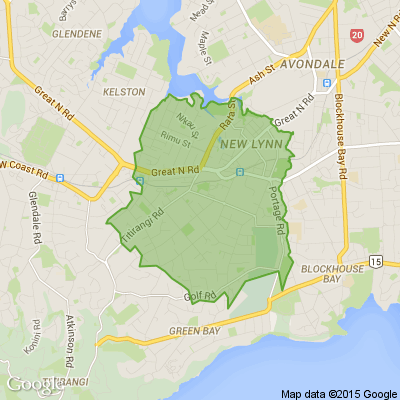Ideas for reducing moisture in your home
Every winter we hear and see stories of people living in extremely damp, mouldy conditions.
It’s a symptom of living in older wooden houses in a temperate climate with inadequate heating, ventilation and insulation. However, it isn’t just extreme cases that need to be fixed — most of us would be more comfortable if we reduced the dampness in our homes.
A damp home is an unhealthy home, there’s no argument there. But it isn’t just that — damp air takes more energy to heat than dry air, so it literally pays to remove moisture from your home.
Musty smells, mouldy walls and ceilings, weeping windows and damp clothes in wardrobes are all signs you need to reduce moisture and increase ventilation or heating.
Start by reducing dampness sources. Moisture gets into your home in many ways. One of the biggest sources is moisture evaporating up from the ground through your floors (as much as 40L per day per 100m2). Check for dampness under your house and fix any drainage, guttering, downpipe or plumbing problems — then consider installing a sealed moisture control sheet.
Other daily activities can add moisture to your home:
===========================================
Drying clothes inside can add 5L of moisture per load. Make use of good winter days to dry clothes outside. Using the fastest spin speed on your washing machine minimises the amount of drying needed. If you use a vented clothes dryer, ensure it vents outside.
Clothes drying on rack indoors.
=========================
Cooking can add up to 3L a day. Use pot lids when cooking to contain steam and a kitchen rangehood or fan that vents outside.
Showers and baths add up to 1.5L per day per person. Use an extractor fan when showering or taking a bath, or at least open a window. You can also fit a dome to your shower to contain moisture.
Don’t use unflued gas heaters to heat your home. Not only are they dangerous unless well vented, they add up to 1L of moisture to the air per hour.
Sources of moisture
=================
Once the main sources of dampness are removed or reduced, you can think about ventilation. Just living and breathing adds moisture into the home, and we can’t stop doing that. However, we can open windows to let a breeze through and vent moisture-laden air. It seems counter-intuitive to open windows on a cold winter day, but removing moisture will be healthier and make your heating more efficient. Get in the habit of airing your home every day or leaving windows slightly open.
Many of these tips are free or low-cost, but they can be highly effective. Further options start to get pricier.
You could consider a dehumidifier to target parts of the home that don’t get enough airflow and remain damp. However, they aren’t a magic bullet — the best dehumidifiers in our tests remove up to 9L per day at 12°C, but only desiccant models perform when it’s colder. They are effective at drying smaller spaces, and act as a small heater too (they put out about 300 to 400W of heat).
Mould
======
Mould is known to cause inflammation, allergies and infections.
It is a relatively straightforward process to remove mould from hard non-porous surfaces, such as glass or ceramic tile. However, removing mould from porous substances such as wallboard, wood and carpets is more difficult and more hazardous. This is because spores can be released when disturbing rotten material, which can cause inflammation, allergies and infections.
New homes
==========
In new buildings, some moisture is trapped during the construction process. Wet timber may also have been used. The sequencing and timing of the construction process is important to avoid this and be sure to avoid storing construction materials out in the open where possible.
Under the floor
============
To prevent damp air from building up under the floor:
Ensure there is sufficient ventilation. Vents are often obstructed by vegetation and should be cleared.
Make sure water isn’t draining from paths or gardens under the house. You may need to create channels or underground drains to divert surface run-off.
Cover the ground area beneath your home with heavy-grade polythene, taped at the joints and trimmed neatly against the foundation walls.
Ventilating
=========
Let moist air out and dry air in by:
Opening your windows – especially in wet areas such as bathrooms and kitchens. Even in winter, it’s worth opening windows to let the house dry out.
Closing doors to contain steam/condensation in wet areas.
Using extractor fans in bathrooms and kitchens (but never vent them into the roof space above the ceiling or under the floor. Always vent them outside).
Venting clothes dryers to the outside. A typical load contains 5 litres of water. This is released as water vapour, which can end up creating thousands of litres of damp air.
Installing vents into windows.
========================
Using a forced ventilation system. That said, forced ventilation systems can be expensive to install. Try to address the cause of the moisture build-up instead.
Clothes drying on rack indoors.
Insulating
========
Block off draughts. Use draught seal tape around windows and doors. Block off unused chimneys, but ensure it’s not an airtight seal as air needs to circulate into the chimney to allow drying if rain gets in.
Insulate your ceiling. This helps keep your home warm and reduces condensation; 42% of heat loss is through the ceiling/roof. Older homes often don’t have any ceiling or wall insulation.
Consider installing double or secondary glazing.
Check existing insulation is in good condition. As a guide, insulation should fill up to the top of the roof/ceiling joists.
Insulate beneath the floor. The floor accounts for 10% of heat loss. You will need reasonable access under the floor and, in windy sites, the insulation will need to be protected by a separate layer of lining material, for example plywood or fibre cement.
Well-fitted heavy curtains, drawn on winter nights, will help retain heat gained from the sun during the day.
Heating
=======
If the indoor temperature is at least 7ºC warmer than the outdoor temperature, it’ll prevent condensation forming on colder surfaces. The World Health Organisation recommends an indoor temperature of at least 16ºC in bedrooms and 18ºC in living areas.
Use low levels of heat all the time rather than high levels in short bursts. This reduces condensation.
Don't use unflued gas or kerosene heaters inside – they release up to 1L of water per hour.
In damp cupboards, consider installing a cupboard heater.
=====================================================
New Year, New Questions You Won’t Solve!
I get smaller every time I take a bath.
What am I?
Do you think you know the answer to our daily riddle? Don't spoil it for your neighbours! Simply 'Like' this post and we'll post the answer in the comments below at 2pm.
Want to stop seeing riddles in your newsfeed?
Head here and hover on the Following button on the top right of the page (and it will show Unfollow) and then click it. If it is giving you the option to Follow, then you've successfully unfollowed the Riddles page.

What it feels like speaking with a MAGA American:
Me: “Your total is $44.19. Cash or card?”
The customer hands me a credit card but the chip inside it has been hole-punched out.
Me: “Uh, I don’t think this will work.”
Customer: “Why not? It hasn’t expired and I have money in my account.”
Me: “Sir… the chip is gone.”
Customer: “I didn’t want the chip.”
Me: “The card won’t work without it.”
Customer: “It just means I can’t enter my PIN, but you can still swipe it.”
Me: “I don’t think it will work, sir.”
Customer: “Just swipe it.”
I swipe it to prove a point.
Me: “It’s not working, sir.”
Customer: “Then you’re doing it wrong. Swipe it again!”
I do so again with the same result.
Customer: “Maybe you should swipe it so that the magnetic strip isn’t the thing being swiped?”
Me: *Swiping it as suggested.* “Sure, why not? About as much chance of it going through without the magnetic strip as there is without the chip – oh look, it didn’t work.”
Customer: “Your machine must be broken!”










 Loading…
Loading…




